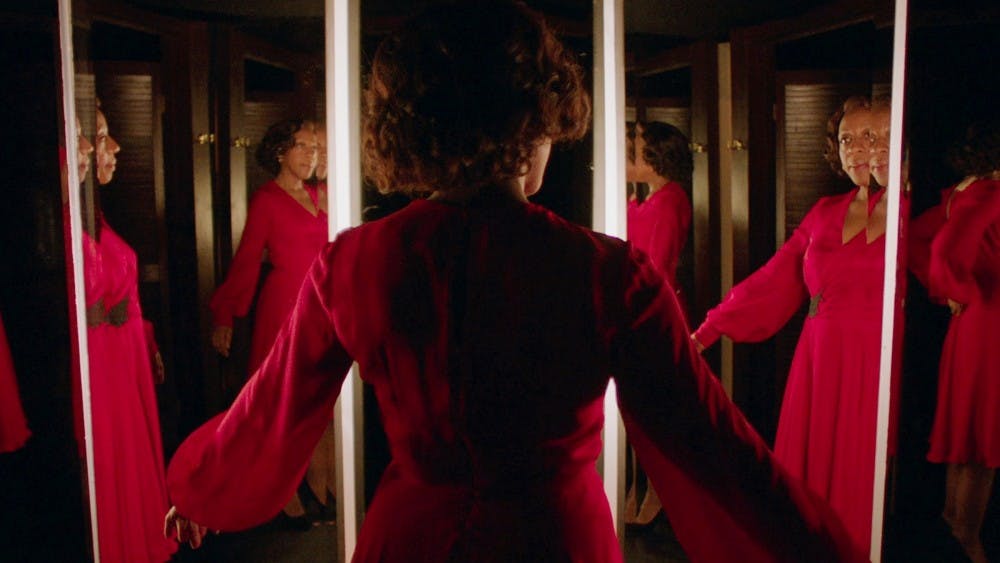“It’s a lot like on Saturday Night Live when Stefan described his favorite clubs because it has everything. It has a killer dress, it has a super weird mannequin, there’s retail workers that speak in riddles, there’s Gwendoline Christie as the dominatrix.” This was Chandler Ferrebee, assistant programmer and communications manager of the Virginia Film Festival, in her amazingly accurate introduction to the Friday showing of “In Fabric,” written and directed by Peter Strickland. However, despite the hilarious veracity of this preface, there is not a comparison in the world that could have prepared the audience for what they were about to watch.
Categorized under the seemingly impossible genre of “satirical horror,” the film was mysterious from the get-go, and even after the first 40 minutes of the two-hour-long show, it was evident that things wouldn’t be getting any clearer. The film was confusing and creepy, and evoked uncomfortable laughter at every turn. Sometimes this was a result of witty writing, but mostly, it was because the audience didn’t know what else to do.
In an attempt to uncover a larger message, a case could be made that “In Fabric” is a critique of consumer culture, and during the first half of the film, this analysis seems plausible. Sheila Woodchapel, one of the main protagonists played by Marianne Jean-Baptiste, is a recent divorcee who is at odds with her son and his intimidatingly rude girlfriend, Gwen, played by Gwendoline Christie from “Game of Thrones.” In addition, the frequent and baseless scrutiny she faces at work leaves her longing for self-confidence and security. This craving is temporarily satiated with the purchase of a new dress. The stunning red silk number is sold to her by the nightmarishly creepy Miss Luckmore, who showers Woodchapel with cryptic compliments and encourages her to be confident in her purchase.
In between scenes, vintage stills of models showcasing 1950s level perfection flash alongside newspaper singles’ ads and disorienting rotating mannequin heads. The enviable flawless legs, tiny waists and perfectly manicured red nails that are featured further expose society’s flawed equation of beauty and fashion with confidence and success. These scenes alone are evidence of the toxicity of current and historic consumerism. However, in combination with the rest of the film, it is hard to view this message clearly.
One diverting theme was the overt sexual nature of the film. One painfully unforgettable scene involving a mannequin, a sponge, Miss Luckmore and an eager onlooking old man will undoubtedly be burned into the memories of every single audience member for years to come, but this review will spare readers the details. Scenes such as these added interest and dynamism, but the shock value ultimately took away from the presumed message, resulting in the conclusion that “In Fabric” is simply a bizarre story about a possessed red dress, rather than a profound social commentary.
“In Fabric” has to be one of the weirdest films shown this weekend, but it was probably one of the most memorable as well. If watched in a group, it is guaranteed that this movie will leave viewers with inside jokes to last them a lifetime. Additionally, “In Fabric” was — thankfully — very timely. Accompanied by a “Stranger Things”-esque soundtrack, the disturbing film was an interesting way to kick off Halloween festivities.
In case this review has failed to capture the essence of “In Fabric,” one last comparison can be made. “In Fabric” is like Lady Gaga’s “Bad Romance” music video. It’s weird, it’s provocative, it’s violent, it’s sexual and it doesn’t really make any sense. But at the end of the day, viewers can appreciate the production and the drama and recognize it as iconic.







